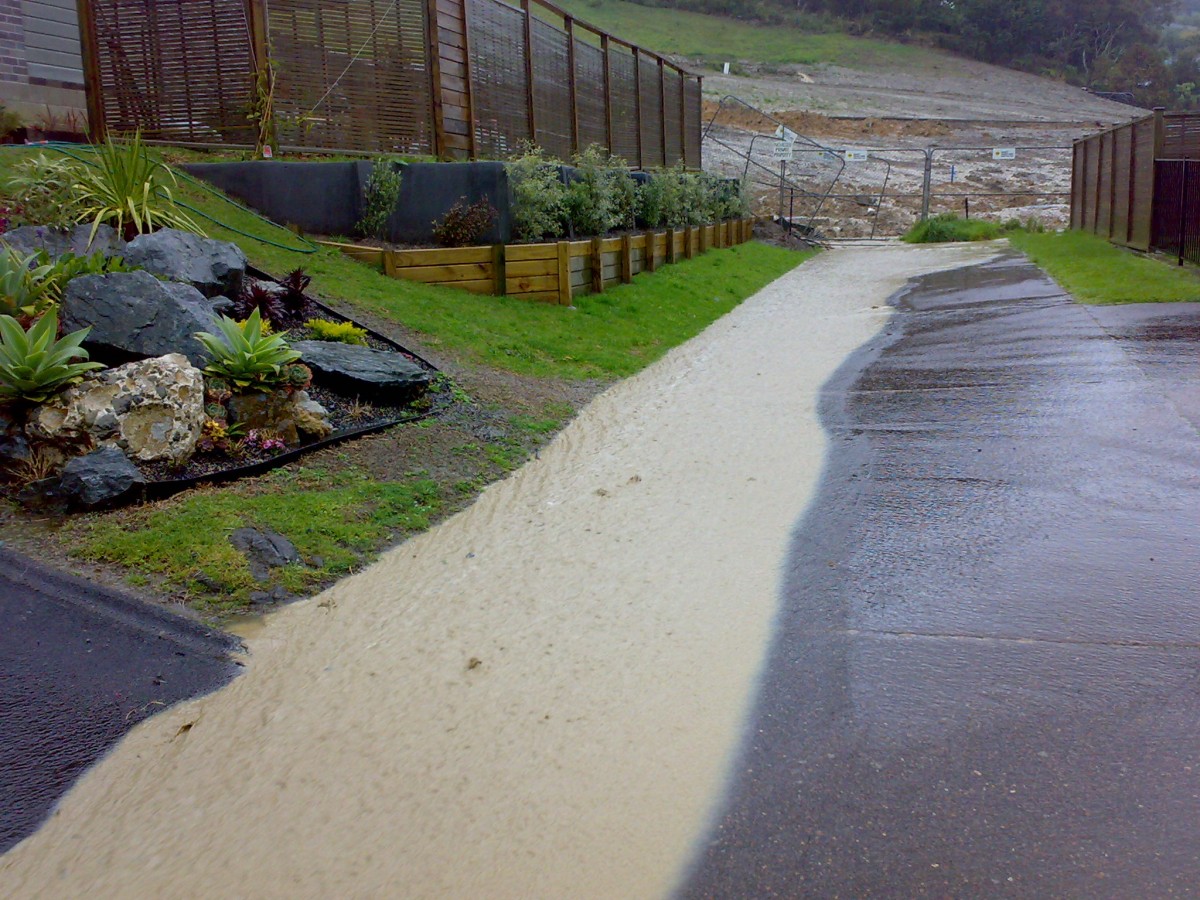Keep waterways waste free
18 Jul 2017, Building and housing, Featured, LBP & Regulation, Prove Your Know How

As promised, Under Construction will be including all compulsory Codewords articles to help LBPs earn their required points and stay up to speed with changes. This month’s article is required for carpentry, foundations, brick and blocklaying, external plastering and design licence holders
Under the new skills maintenance scheme, reading Codewords articles relevant to your licence and answering the corresponding questions is a mandatory part of skills maintenance (for those who have renewed their licence since 2 November 2015). Once you’ve read the article, answer the questions below.
Drain damage
Unlike the wastewater system, water that goes down stormwater drains flows straight into local streams and the sea without being treated. Anything else that goes down there – mud, concrete or paint for example – will pollute waterways and everything that lives in them.
For example, concrete and cement products are extremely toxic and can raise the pH levels of streams, killing all wildlife. It takes 100,000 litres of freshwater to dilute just one litre of concrete slurry to safe levels.
The consequences aren’t only severe for wildlife – discharging contaminants to stormwater drains can result in a $750 fine under the Resource Management Act and possible further court action.
One of the things resource consent inspectors look for onsite are the environmental controls you have in place to prevent contaminants such as sediments, clays and concrete products, from entering the stormwater network.
Below are some easy, inexpensive tips to ensure clean rainwater is the only thing that goes down stormwater drains at your site:
- Create a stabilised entranceway for your site by putting down GAP 65 aggregate, giving tradespeople a place to park and stopping them driving over exposed clay or dirt and tracking it onto the road.
- Install a silt fence 200mm into the ground on the downhill side of your site to capture sediment run-off.
- Keep stockpiles of sediment or soil behind your silt fence, or cover them with plastic sheeting or hay mulch.
- Keep as much grass coverage onsite as possible.
- Before pouring concrete, de-water pile holes and footings to stop slurry spilling out and into drains.
- Never wash concrete equipment where runoff may enter the stormwater drain – wash on unsealed ground such as grass or aggregate.
- Remember, you are responsible for your subcontractors, so ensure delivery companies or pumpers don’t wash concrete slurry to the stormwater drains.
This article first appeared in Codewords – Issue 78
Register to earn LBP Points Sign in
4 Comments
Leave a Reply
You must be logged in to post a comment.




Done
Yes
yes
clean sites